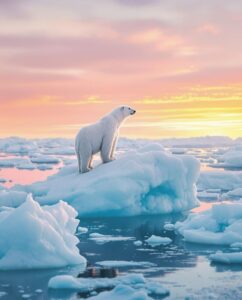Oceans of the World: Examining the Widest Blue Frontiers of the Planet.
Earth is referred to as the “Blue Planet” for good reason—water covers roughly 71% of its surface, mostly in the form of enormous oceans of the world. The planet’s climate, weather patterns, and biodiversity depend on these powerful bodies of water. The Pacific, Atlantic, Indian, Southern, and Arctic are the world’s five major oceans. Every one of them has distinct qualities and is essential to the ecosystem on Earth.
The Pacific Ocean is the deepest and largest ocean
Stretching from the Arctic in the north to the Southern Ocean in the south, the Pacific Ocean is the biggest and deepest of all the oceans. To the west, it is bounded by Asia and Australia.
Atlantic Ocean: The Ocean of Exploration

The Atlantic Ocean is the second-largest and played a central role in world exploration, trade, and colonization.
Area: About 41 million square miles (106 million km²)
Major Feature: Mid-Atlantic Ridge — a vast underwater mountain range
Fun Fact: It’s shaped like an “S” and connects the Arctic and Southern Oceans.
Indian Ocean: The Warmest Ocean Of The World

The Indian Ocean is known for its warm waters and strategic importance for international trade routes, particularly around Asia and Africa.
Area: About 27 million square miles (70 million km²)
Bordered By: Africa, Asia, Australia, and the Southern Ocean
Fun Fact: Home to rich marine biodiversity and coral reefs.
Southern Ocean: The Newest and Coldest Ocean Of The World

Recognized officially by the International Hydrographic Organization in 2000, the Southern Ocean surrounds Antarctica and plays a major role in global ocean circulation.
Area: About 7.8 million square miles (20 million km²)
Feature: Antarctic Circumpolar Current — the world’s strongest ocean current
Fun Fact: It helps regulate Earth’s climate by distributing cold water and heat.
Arctic Ocean: The Smallest and Shallowest
The Arctic Ocean is the smallest, shallowest, and coldest of all the oceans. It is largely covered by sea ice year-round.
Area: About 5.4 million square miles (14 million km²)
Surrounded By: North America, Greenland, Northern Europe, and Asia
Fun Fact: Polar bears, seals, and unique Arctic marine life thrive here.

Importance of Oceans Of The World
Climate Regulation: Oceans absorb heat and distribute it around the globe.
Oxygen Production: Marine plants produce over 50% of Earth’s oxygen.
Biodiversity: Oceans are home to millions of marine species.
Economy: Fisheries, tourism, and transportation depend on healthy oceans.
Conclusion
The oceans of the world are more than just vast stretches of water. They are vital to our planet’s health and sustainability. As climate change and pollution threaten these delicate ecosystems, understanding and protecting our oceans is more crucial than ever. Besides, Bangladesh has a Bay Of Bengal named Cox Bazaar, the longest sea beach in the world.
